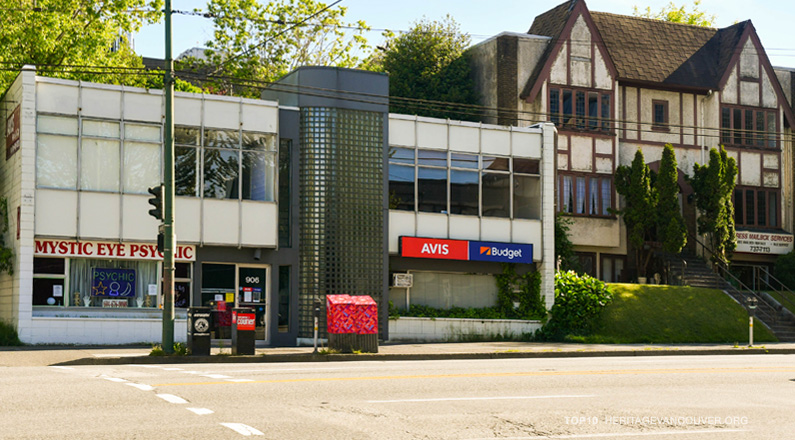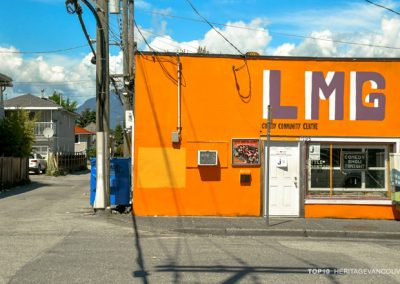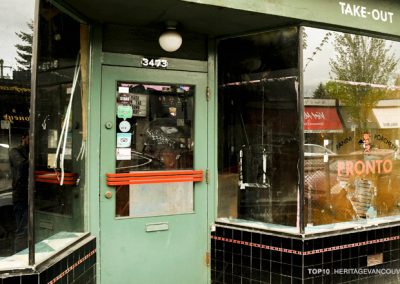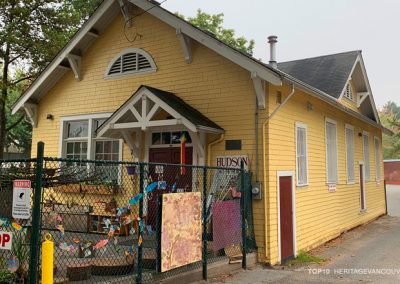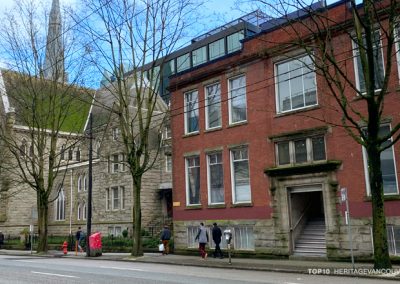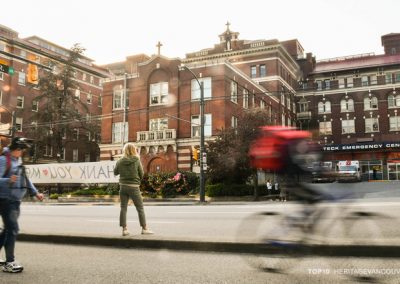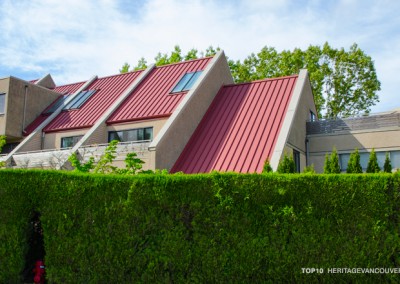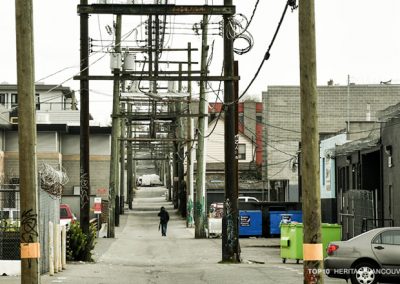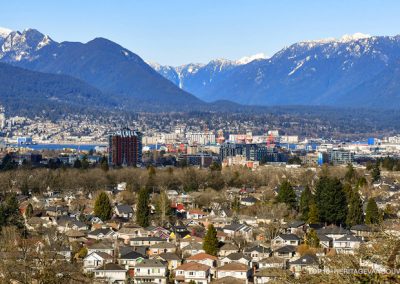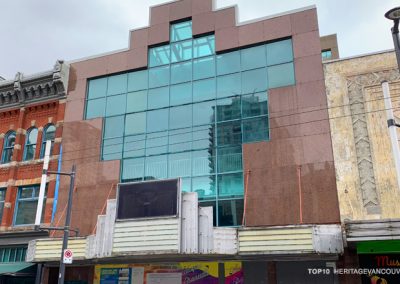With potentially major changes along Broadway, it is important that the Broadway Plan strengthens the diversity and characteristics that have made the neighbourhoods along it distinct.
We need to avoid the consequences of Skytrain construction along the Cambie corridor prior to the 2010 Winter Olympics, which were the results of when a planning process is done poorly: large residential blocks that are disconnected from existing neighbourhood context and street life.
Without careful identification of the physical and non-physical attributes that provide Vancouverites the connection to the neighbourhoods along Broadway and commitments to protect and strengthen them, the Broadway Plan could just turn Broadway into another uniform stretch of high road.
Planning to futureproof key corridors of the city can incorporate a heritage perspective that is much broader by approaching sense of place as being made up of a variety of interests including community needs, reconciliation with First Nations and Urban Indigenous Peoples, historic buildings and landmarks, neighbourhood experiences and public memory.
Threat
Since March 2019, Broadway has been undergoing a planning process related to the rapid transit line.
Careful identification of tangible and intangible assets is extremely important so that planning and development does not disconnect existing neighbourhoods and street life. It is also important for public memory that we have a sense of these places and the histories there.
While it is a positive step that the Broadway Plan Phase 1 Engagement Summary, the Broadway Plan Guiding Principles and the Policy Report to Council mentions support for Indigenous Peoples visibility on the land, there is very little mention or detail about heritage, in particular, a holistic view of heritage along Broadway that focuses on context.
Phase Two of the Broadway Plan’s consultation began in October 2019 after Phase One concluded in September 2019. More recently, Part 1 of Phase Two saw events held through March 2020 which sought to engage more underrepresented groups, small business owners, and city advisory councils. The most recent development has been the announcement of the Skytrain station sites and the commencement of construction on those sites.
While we are currently in Phase 3 (Refining Direction) of a 4 Phased Process (Phase 4 is Finalizing the Plan), recognition of a broad approach for distinct cultural heritage areas such as Mount Pleasant is not reflected in the Phase 2 Engagement Summary.
Mount Pleasant Heritage Group, for example, has been communicating to the City about the need for a plan to manage change in Mount Pleasant that “deals holistically with the social diversity, independent businesses, affordable rents, historic architecture, smaller store frontages, public spaces and unique personality of Mount Pleasant.”
This holistic view and approach to heritage aligns with the update to the heritage program approved by Council in early 2020, which is a much broader conception dealing with change in living communities instead of dealing strictly with changes in the built environment.
A transit-focused neighbourhood is not a bad outcome in some ways, but if the same development pattern occurs along Broadway, we may lose the unique elements that make up each neighbourhood: the unique groceries of Kitsilano’s Greektown; the pleasant walkability of mixed-use Fairview Slopes; Main Street’s trendy retail and casual street life; and the dense, leafy character homes of Mount Pleasant.
Significance
One of the challenges of the Broadway plan study area is its size – the area stretches from Clarke Drive to Vine Street.
The region also stretches way back in time, with First Nations’ activity on the slopes long before 1890 when the first road was built and became a major colonial thoroughfare. Through the passing of time, there are left numerous unusual architectural and placemaking assets, along with many intangible patterns of daily use.
Like with all places across the city, Broadway has sites that may not be formally recognized as significant or heritage. If wholesale redevelopment as per the Cambie corridor occurs, particularly around the proposed transit stops, the patterns of daily life that make up these neighbourhoods will be broken up and lost.
Generally speaking, existing services and shops are not able to move back into the standardized commercial retail units that are included in new developments. This might be due to rent increases, incompatible floor sizes or simply a lack of uniqueness and disruption of normal business operations.
In the worst case, the new stores are nearly blank facades (banks, large format retail), in better cases the replacement stores are simply new ventures that will require time to become ingrained into the street and neighbourhood.
There is also the question of what happens to places that are coming down that have an important public meaning.
For example, the mid-century international style building at 2539 Laurel Street, which will be the future site of the Oak-VGH station, was the former headquarters for the BC Tuberculosis Society. It was from here that BC wide mobile inoculations were organized and run from. In demolishing this to make way for new development, there should be high standards for how what is going in invites us to appreciate the past and participate in learning about the city’s histories.
It is encouraging that reconciliation with First Nations and Urban Indigenous Peoples is a guiding principle of the Broadway Plan and that visibility of their presence on the land is supported.
Position
Heritage Vancouver is not against change and is not opposed to the rapid transit line or Broadway planning process.
Rather, Heritage Vancouver supports a robust, citizen-centered planning process that truly reflects and is led by the comments, concerns and feelings of neighbourhood residents and Vancouverites as a whole.
We look forward to seeing how for example, Mount Pleasant Heritage Group’s input and request for a holistic heritage management plan that is inclusive of affordable rents, independent business, and historic architecture etc. is reflected in planning and subsequent development for Mount Pleasant and the Broadway Plan.
The Broadway Plan with its attention to growth should intend seriously to retain and enhance elements that provide a sense of place. Whether properties are demolished or remain, or places once there are currently obscured, we strongly urge that the City carefully identify stories of place, and tangible and intangible assets.
We also urge the City to design and plan with public memory and sense of belonging in mind.
Actions
- Spread the word about this planning process.
- Attend, write and speak at Broadway Planning events and express your views.
- Get involved with your local neighbourhood association.
- Write and speak to Vancouver’s Mayor and Council.
- Community engagement is scheduled to start again in 2021; these sessions may prove crucial for further action to save important sites along Broadway.
Resources
Shape Your City: Broadway Plan
“The Broadway Planning Team is excited to announce that the Phase 2 – Emerging Directions Virtual Open House will take place on February 16 to March 31 here on our ShapeYourCity website”
City of Vancouver; February 2021
Homeless in Vancouver: Few surprises in announcement of Broadway subway station locations
Stanley Q. Woodvine, Georgia Straight; September 19, 2019
City of Vancouver Policy Report: Broadway Plan
September 25, 2019
Broadway Plan Guiding Principles
City of Vancouver
Broadway Plan: Phase 1 Engagement Summary Report
City of Vancouver
Emily Carr included among names unveiled for new Broadway SkyTrain stations
CBC News; September 17, 2020
